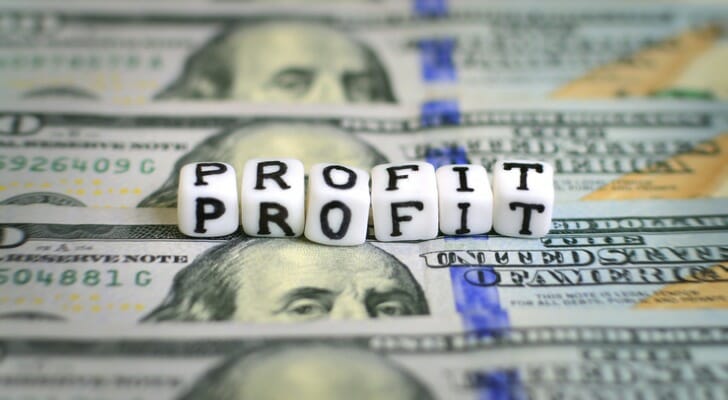People often use yield and return interchangeably. These generally refer to what you’ll earn from a fixed investment, such as a bond. However, there are some important differences to note when defining the terms yield and return. Learning the basics of these two important concepts, plus some key differences, can help you become a more educated investor.
Do you have questions about investing toward your retirement goals? Speak with a financial advisor today.
The Basics of Yield and Return
The yield of an investment is the income it earns. An investment usually expresses its yield as a percentage. For example, the interest or dividends a security produces over a certain period of time can be its yield. The yield of an investment uses the investment’s face value, or what an investor originally paid for a stock. Also, yield factors in an investment’s liquidity, or its current market value.
An investment’s return, however, is the dollar amount an investment earns or loses over time. An investment’s return also accounts for dividends earned, interest earned, and capital gains. Yield isn’t as predictable as return. However, sometimes investors can anticipate yield, depending on the security and its predictability.
Understanding Bond Yield
Yield can also be a means of expressing a bond’s future earning power. But it requires more than just calculating an investment’s earnings. That’s where a bond’s current yield and coupon yield come into play.
A bond’s current yield divides a bond’s total income by its market price. Current yield (CY) is a percentage that fluctuates based on market conditions. The coupon yield of a bond is the amount of interest a bond earns. Institutions issue bonds with a predetermined coupon yield. The market doesn’t affect coupon yield. Meanwhile, a bond’s yield to maturity also determines its earnings. That’s the amount an investor stands to earn on a bond should they hold it to maturity.
Understanding Bond Return
Bond returns are derived from three primary sources: coupon payments, capital gains or losses, and reinvestment income. Coupon payments are the periodic interest payments the bondholder receives during the bond’s life, based on the bond’s stated interest rate, or coupon rate. Capital gains or losses occur when the bondholder sells the bond before maturity at a price higher or lower than the purchase price. Lastly, reinvestment income refers to the interest earned by reinvesting the periodic coupon payments, which can enhance overall return but depends on prevailing interest rates.
The total return of a bond captures the combined effect of all cash flows, including both coupon payments and changes in the bond’s price. Bond returns are sensitive to changes in interest rates and credit conditions. When market interest rates rise, the price of existing bonds tends to fall, reducing potential returns, since new bonds are issued with higher yields.
Key Differences of Yield vs. Return

It’s easy to see how an investor might confuse yield and return. After all, both refer to the income earned on an investment. But there are several distinctions between the two. Yield refers to income earned on an investment, while its return refers to what an investor gained or lost on that investment. Yield expresses itself as a percentage, while the return is a dollar amount.
An investment’s yield is a more forward-looking assessment. As a result, it represents what an investor stands to gain (or lose) on that investment. Yield takes into account current market value and face value but does not factor in capital gains. Meanwhile, its percentage is typically an annual percentage rate (APR). As with any investment, the higher the risk, the higher the potential yield.
Alternately, an investment’s return focuses on the dollar amount of what an investment has earned in the past. Return focuses on paid dividends or annual payments made to stock owners or investors by the company. It also looks at capital gains, which is the increase in the value of an asset. Capital gains can both be short and long-term.
Do not confuse yield with rate of return. Both are percentages that anticipate an investment’s expected return over time. However, the rate of return takes into account capital gains and yield does not.
Bottom Line

Both yield and return refer to what an investor might earn on a fixed investment. People often confuse the terms, but there are a few important distinctions between the two. The more forward-thinking of the two concepts, yield expresses itself in a percentage form. Also, it refers to the income earned on an investment over time. Return, however, focuses on an investment’s past earnings and expresses itself in a dollar amount.
Be careful not to confuse yield with rate of return. Both are percentages that express what an investor stands to earn on a particular security, but the rate of return takes into account capital gains and yield does not.
Investing Tips
- If you’re not sure how to diversify your portfolio, a financial advisor may be able to help. Finding a financial advisor doesn’t have to be hard. SmartAsset’s free tool matches you with up to three vetted financial advisors who serve your area, and you can have a free introductory call with your advisor matches to decide which one you feel is right for you. If you’re ready to find an advisor who can help you achieve your financial goals, get started now.
- Do you know how much investment risk you can tolerate? How much will your investment grow over time? Will capital gains taxes take a chunk out of your earnings? How will inflation affect your overall returns? SmartAsset’s investing calculator can help you with these initial questions.
Photo credit: ©iStock.com/domoskanonos, ©iStock.com/gece33, ©iStock.com/Dmytro Varavin
